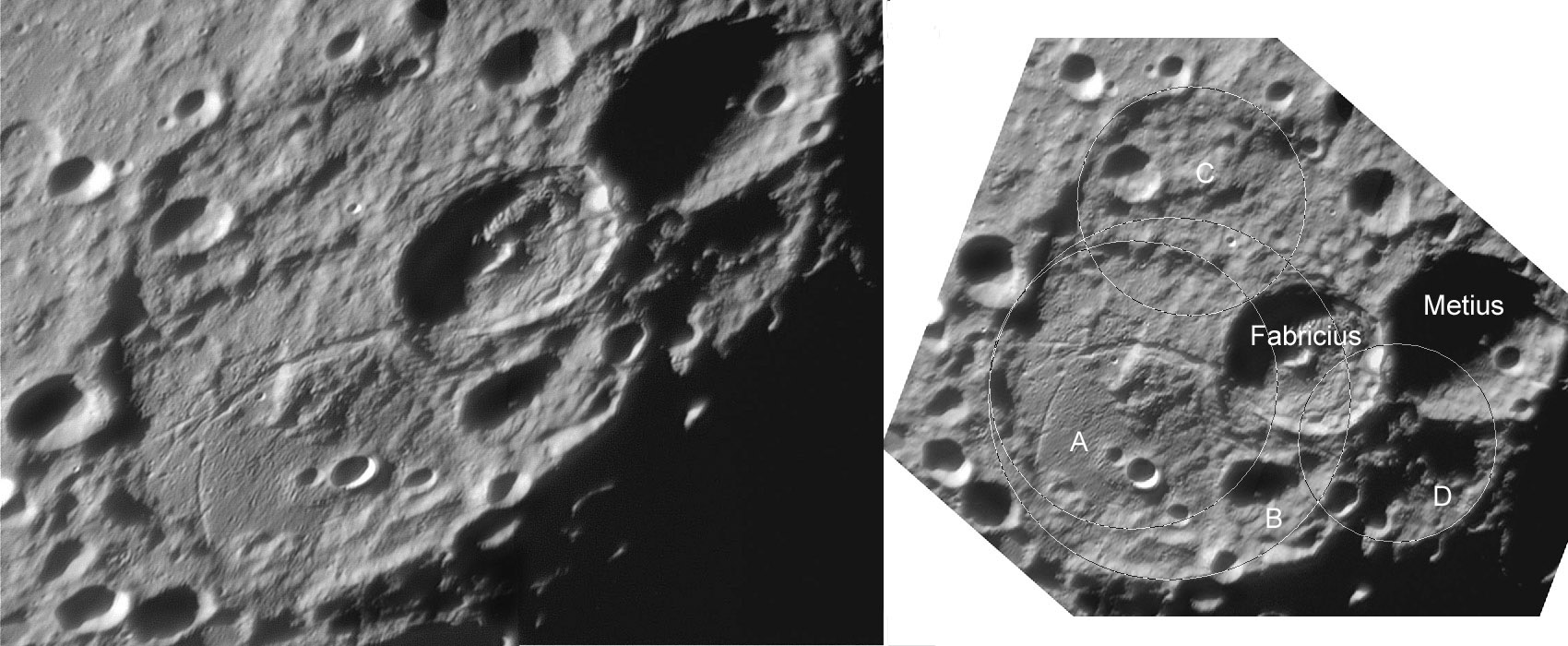
image by [1]Jérôme Grenier
Janssen is a hodgepodge of craters with no certainty as to the number or exact sizes. To try to unravel this pileup I have crudely rectified Jérôme’s image to present an overhead view. I see four different circles here in addition to Fabricius and all the other certain craters. First, is the circle, dare I say crater, labelled A. This is defined by the arcuate ridge that bounds the relatively smooth southern part of Janssen’s floor, and uses the somewhat linear ridge on the northwest side. This crateriform structure is 140 km in diameter and has the merit that its center coincides with the largest part of the ridge cut by the Janssen Rille - this ridge would be A’s central peak, coated with Fabricius’ ejecta. The larger (182 km) circle B corresponds with what has often been called Janssen. The larger rim at the southeast defines the radius of the circle, which passes through the peak on the south, but not through any other topographic rise. This circle perhaps should be enlarged to pass through the peak west of where circles B and C instersect and it would come close to the mound in the middle of circle C. One hundred thirteen km wide C is an older crater that has been cut by the formation of Janssen, where ever its rim is. And D is another old crater that is mostly destroyed by Janssen and Metius. Sometimes the area within circle C is considered part of Janssen, but that seems unlikely if Janssen is approximately circular. These circles are somewhat arbitrary, but some such combination of overlapping craters is responsible for messy feature we call Janssen. Note, however, that these older craters don’t cast light on why the largest highland rille is here, and why Fabricius has such an odd, off-center linear ridge.
PS - concatenation really means to link, as in a chain. If these craters are linked, there is a high degree of overlap!
Technical Details:
30 september 2007, 04:32 HL (Paris). Dmk31 AF03, Orion Optics (UK) OMC 12″ + barlow 2x + Red filter; Mosaïc of two views stacked in Registax.
Related Links:
Rükl charts 67 & 68
You support LPOD when buying lunar books (or ANY book) from Amazon!
COMMENTS?
Click on this icon File:PostIcon.jpg at the upper right to post a comment.



